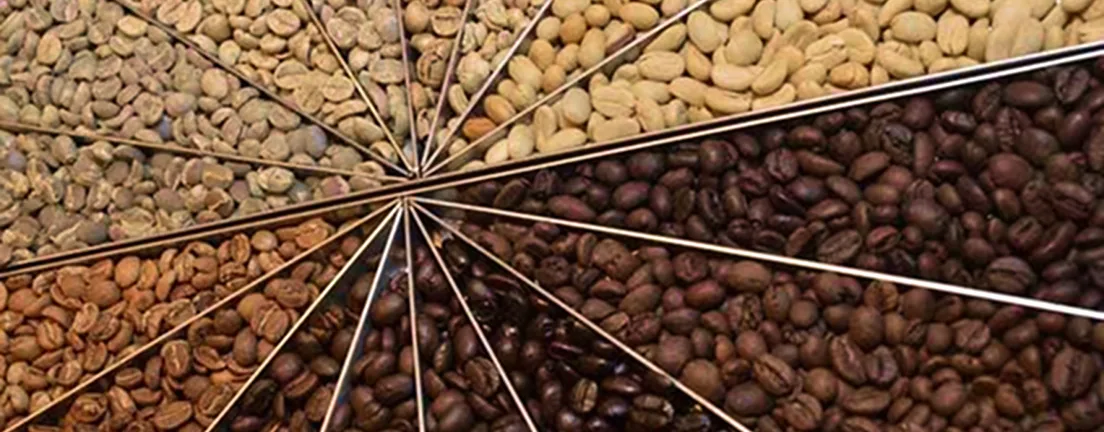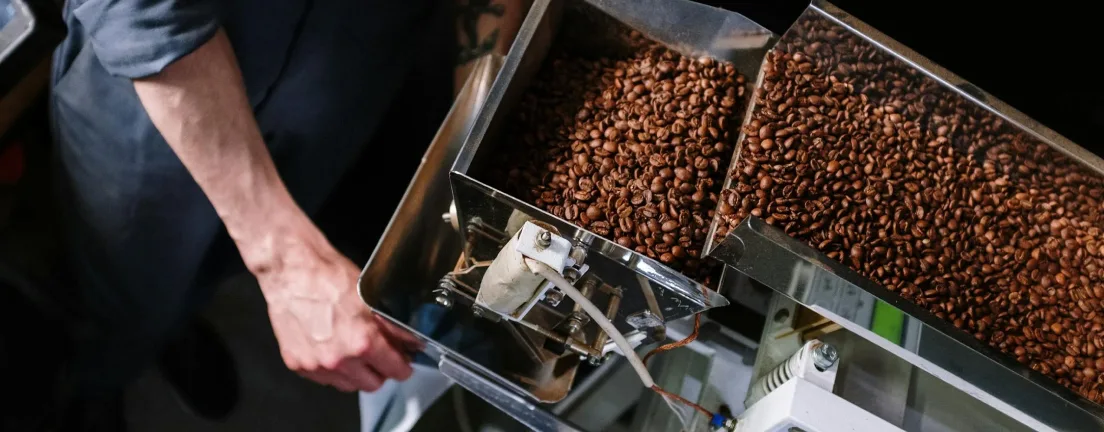Using some of the best roasting equipment in the world to develop our coffee, our Probat roasters work with precision to naturally develop the characteristics of the coffee.


Coffee beans have a humidity of around 10% (give or take), which means they need to be dried prior to roasting.
How long this takes will depend on the roaster in question, however the temperature of the beans at the end of this step should be around 160°C. There’s a very delicate balance here as it can’t be heated too quickly or too much as you risk burning the beans.
It’s also during this stage that energy from the bean is collected as the third stage of the process is exothermic (heat producing).

From here the coffee beans will begin to smell a bit like hay or toast, losing their original green colour and grassy aroma – this is a sign that the aroma precursors are changing to aroma compounds.
It’s during the browning stage that an exciting process known as ‘the Maillard reaction’ happens.
This is where the beans have absorbed enough heat which causes the amino acids and sugars to react with one another as the beans turn darker in colour, creating the unique and distinctive aroma profile for each bean.

The development stage sees an exothermic reaction occur and the roasted coffee starts to crack due to the collected energy from the drying process.
This is where the aroma compounds are developed and the total time it takes depends on the desired flavour profile or roast.
If a dark roast is wanted, a second crack may occur, but the roast should not go too far past the second crack as the coffee beans start to bake and the result is a doughy tasting coffee.

Once the desired roast has been achieved, the coffee beans need to be transferred to a cooler tray so they can be cooled quickly.
If they are not cooled quickly, the heat given off by the beans can cause them to continue to cook even after they’ve finished roasting, resulting in burnt and charred beans.
We offer corporate and wholesale programs designed to your business needs and ensuring the best quality & reliability and support.
Get 20% off your first order of any 12oz coffee bag with code FIRST20!